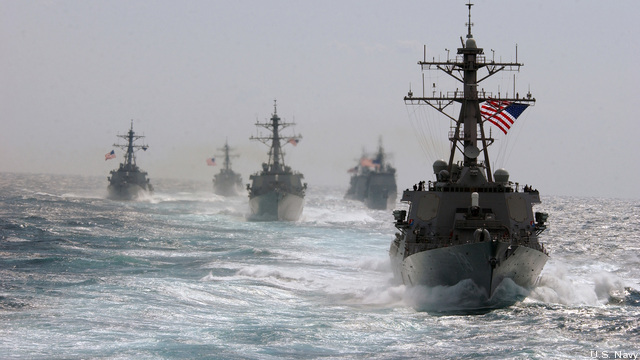More Missile Defense Ships, New Ground Deployments
Posted on

Aegis cruisers and destroyers.
WASHINGTON: A top Pentagon official on Tuesday said major upgrades being made to dozens of Navy destroyers to give them new missile defense capabilities will continue, even as Navy leadership bristles at having so many ships tied up hunting for missile launches.
The comments by James Anderson, assistant Defense secretary for strategy, plans and capabilities, came on the same day that Director of National Intelligence Dan Coats testified before Congress that US intelligence agencies assess North Korea is unlikely to completely give up its nuclear weapons and ballistic missile programs in any potential deal with Washington.
“The Navy does have this mission of ballistic missile defense,” Anderson said during a talk at the Brookings Institution. “It is one of their core missions and it will remain so.” The Navy currently has 38 Arleigh Burke-class Aegis destroyers in the fleet with missile defense capabilities, he noted, and has plans to convert “all Aegis destroyers to fully missile defense capable” status, meaning 60 ships will be able to perform the missile defense mission by 2023.
Just the day before Anderson’s remarks, Chief of Naval Operations Adm. John Richardson complained again that he has ships sailing in “small boxes” protecting assets on land, when they should be out performing other missions.
“We’ve got exquisite capability, but we’ve had ships protecting some pretty static assets on land for a decade,” Richardson said. “If that [stationary] asset is going to be a long-term protected asset, then let’s build something on land and protect that and liberate these ships from this mission.”

Adm. John Richardson, Chief of Naval Operations, addresses sailors in Norfolk
The Pentagon’s newly released Missile Defense Review explicitly calls for more land, air, and space-based sensors to take some of the burden off the Navy, but with potential threats from China, North Korea, Russia, and Iran only increasing, it’s likely there will be plenty of work to go around.
Anderson on Tuesday outlined some of the ways ground-based sensors can take some of that work on.
He called for “strengthening our regional defense postures, including deploying additional Patriot and Thaad and Aegis interceptors” to “provide flexibility” at hot spots around the globe, along with building new ground based radar systems in Hawaii and Alaska that are already underway.
But Aegis ships will continue to play a key role. “With the increase of Aegis capable destroyers,” Anderson said in a nod to Richardson’s complaints, “the Navy is going to have more flexibility with how it specifically allocates those ships…I expect the Navy to remain very much engaged in this mission.”
A cornerstone of the Trump administration’s security plans includes having allies share a greater portion of security costs, something that allies from Europe to Asia have been at pains to make sure the White House sees what they’re buying.
The State Department announced Tuesday that it had approved the sale of two Aegis Ashore systems to Japan for $2.1 billion. In a statement, the agency said the proposed sale “will contribute to the foreign policy and national security of the United States by improving the security of a major ally,” and will provide Japan with an “enhanced capability against increasingly sophisticated ballistic missile threats and create an expanded, layered defense of its homeland.”
Subscribe to our newsletter
Promotions, new products and sales. Directly to your inbox.
